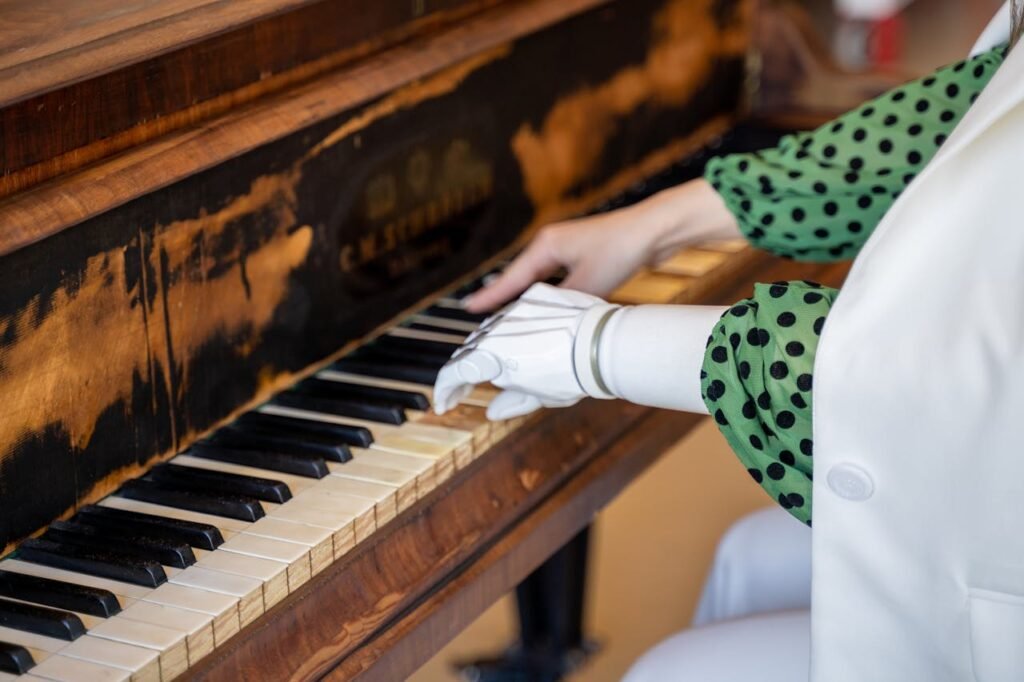Your first prosthetic trial is often filled with excitement, curiosity, and a little nervousness. You’re finally getting a glimpse of what life could feel like with a new limb — the movement, the grip, the independence. But sometimes, that first session doesn’t go as smoothly as expected. Maybe the fit feels a little off. Maybe the sensors don’t respond the way you imagined.
If that happens, don’t worry. You’re not alone — and it doesn’t mean something is wrong with you or the prosthesis. It simply means your body and the device are learning to work together.
At RoboBionics, we’ve helped hundreds of people through their trial journeys. Every limb, every muscle, and every story is different. And troubleshooting early challenges is just a normal, healthy part of the process.
In this article, we’ll walk you through what really happens when fit or signal issues arise during a prosthetic trial — and how to fix them step-by-step. You’ll learn how to recognize common signs, what causes them, and how our team ensures every adjustment leads to perfect comfort and control.
Understanding Fit and Signal Issues in Prosthetic Trials
What Fit Really Means
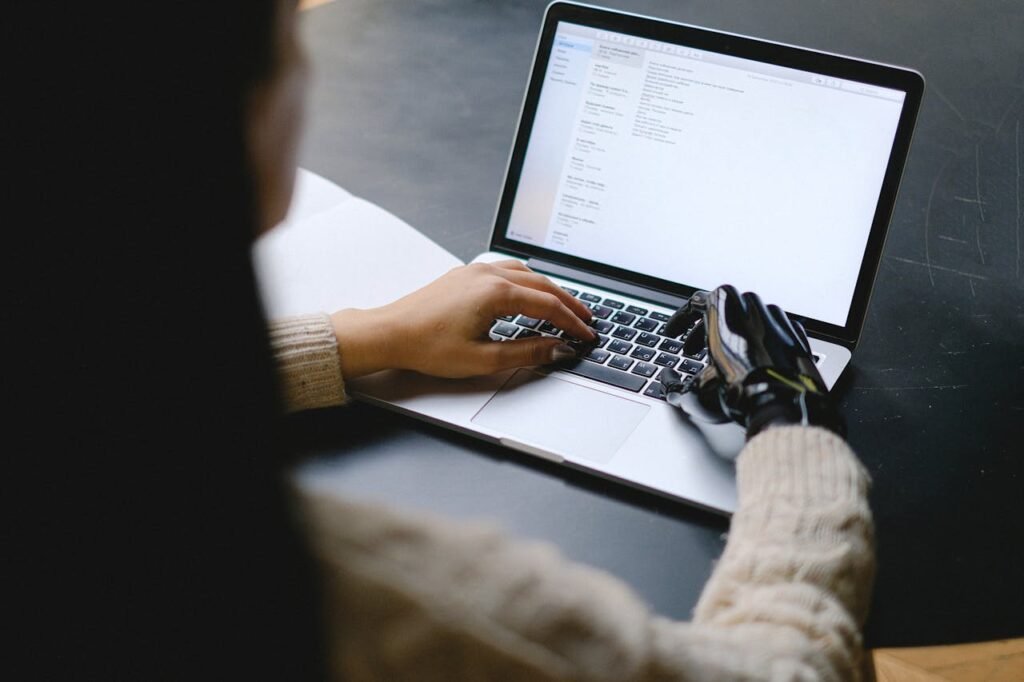
When you hear the word “fit” during a prosthetic trial, it means more than just whether the socket stays in place. Fit is about comfort, alignment, and balance — how well the prosthesis hugs your limb and moves with your body.
A good fit should feel snug but not tight. You should feel secure without any pinching, rubbing, or slipping. If you notice discomfort while moving or pressure points forming on your skin, that’s a sign the socket needs adjustment.
The perfect fit makes the prosthesis feel like part of you. You shouldn’t have to think about keeping it in place — it should stay naturally aligned with your movement.
What Signal Means in a Bionic Trial
In a bionic hand or limb trial, “signal” refers to the muscle activity your prosthesis reads. Sensors, called electrodes, are placed on your residual limb to detect electrical impulses that your muscles produce when you try to move.
These signals are what make your prosthetic hand open, close, or grip objects. If your signals are clear and strong, the prosthesis responds smoothly. If they’re weak or irregular, the movement may feel delayed or inconsistent.
Signal performance depends on your muscle strength, sensor placement, and even skin condition. That’s why every trial starts with calibration — fine-tuning the connection between your body and the device.
Why These Issues Are Normal
Both fit and signal issues are extremely common during the first few trials. Your body is adapting to new sensations, and your prosthetist is learning how your muscles behave.
Think of it like wearing a new pair of shoes. Even with the right size, your feet need time to adjust. Similarly, your residual limb, skin, and muscles need a few sessions to settle into their new rhythm.
The key is patience and communication. Every small feedback you give your prosthetist helps them fine-tune your prosthesis until it feels just right.
How Early Troubleshooting Helps
Catching small discomforts or signal irregularities early makes a big difference. If ignored, they can lead to frustration or fatigue later. But if addressed right away, they often resolve within a single adjustment session.
That’s why at RoboBionics, every demo and trial includes detailed monitoring. We check not only the mechanical performance but also your comfort level and muscle response.
We want your first experience to be one of discovery — not discomfort.
Recognizing Poor Fit During a Trial
Signs the Socket Doesn’t Fit Perfectly
If the prosthetic socket doesn’t fit just right, your body will tell you. The most common sign is uneven pressure. You might feel tightness in one area and looseness in another.
Some people describe it as a gentle pinch or a mild ache when they move. Others notice the prosthesis slipping slightly during use.
You may also see mild redness on your skin after removing it. While some redness is normal, sharp pain, swelling, or continuous pressure marks are not. These signs mean your socket needs fine adjustments.
The Role of Limb Volume Changes
Your limb’s shape and volume can change slightly throughout the day. Heat, activity, or even hydration can make it expand or shrink a bit. This is normal but can affect fit during a trial.
If the socket feels perfect at the start but loose later, it might be due to these natural volume changes. Your prosthetist can adjust padding or liner thickness to compensate, keeping the fit consistent.
That’s why we always ask users to move, stretch, and test the prosthesis for at least 20 to 30 minutes before finalizing the trial fit.
Socket Alignment Issues
Sometimes, discomfort isn’t about size — it’s about alignment. If the angle between your residual limb and the socket isn’t perfect, you might feel an imbalance when moving.
This can cause your prosthesis to tilt slightly forward or backward during motion. You may notice your wrist or fingers don’t line up naturally with your arm movement.
A simple adjustment in socket rotation or height usually fixes this. The goal is for your prosthesis to move exactly as your limb intends — smoothly and in sync.
The Importance of Feedback
Your feedback is the most powerful tool during a trial. Even if a problem seems small, sharing it helps your prosthetist make necessary corrections.
Some users hesitate to speak up, thinking discomfort is part of the process. It’s not. The right fit should feel balanced from the start.
At RoboBionics, we encourage open dialogue throughout every session. You’ll never be rushed or dismissed. Your comfort defines our success.
Understanding Signal Problems
What Causes Weak Signals

Signal problems are common in the early stages of using a bionic prosthesis. The most frequent issue is weak or inconsistent muscle activity.
If your residual limb hasn’t been active for a while, the muscles might not send strong signals at first. With gentle training, this improves quickly.
Sometimes, sweat or moisture interferes with sensor contact. This makes the signals unstable or delayed. Cleaning and drying the skin before wearing your prosthesis usually solves it.
Occasionally, sensor placement needs adjustment — even a few millimeters can make a big difference in accuracy.
Sensor Positioning and Sensitivity
The electrodes on your limb are like small listeners. They “hear” your muscle activity and convert it into movement. But for them to work well, they need to be placed exactly where your muscle produces the strongest impulse.
During your trial, your prosthetist will locate the ideal positions by asking you to flex certain muscles. They’ll then test responses, making small adjustments until the prosthesis reacts smoothly.
If signals seem irregular — such as the hand moving unexpectedly or not responding — the sensitivity can be fine-tuned immediately.
Overactive or False Signals
Sometimes, users experience overactive movement, where the prosthesis reacts even when they’re relaxed. This usually happens when sensors pick up background electrical noise from nearby muscles.
It’s easy to fix. Adjusting sensitivity levels or repositioning electrodes filters out those unwanted signals.
Think of it like tuning a radio — finding the perfect channel where your signal comes through clearly, without static.
The Role of Calibration
Every bionic trial begins and ends with calibration. This process teaches your prosthesis to recognize your muscle pattern — your unique “language” of movement.
Calibration ensures that each time you contract a muscle, the prosthesis interprets it correctly. Over multiple sessions, calibration becomes more precise, making your movements feel natural and intuitive.
It’s completely normal if things don’t feel perfect during your first demo. Your prosthesis is still learning your body’s signals — just as you’re learning how to control it.
The Emotional Side of Signal Learning
When signals misfire or seem slow to respond, some users feel frustrated, even discouraged. But remember, this is part of the learning curve.
Your brain is reconnecting with your limb in a new way. Every practice session strengthens that connection, making control smoother and more instinctive.
At RoboBionics, we see signal troubleshooting not as a problem, but as progress. Each adjustment means you’re one step closer to mastering your new limb.
When Fit and Signals Affect Each Other
The Connection Between Comfort and Control
Fit and signal strength are closely linked. If your socket feels uncomfortable or shifts slightly, sensors may lose proper contact with your skin. This can cause inconsistent readings or delayed movements.
That’s why fine-tuning both fit and signal alignment together is crucial. A comfortable socket provides stable contact points, giving the sensors reliable input.
During your trial, our prosthetists check both aspects side by side — ensuring your comfort enhances, rather than interferes with, performance.
Skin and Electrode Contact
Your skin acts as the bridge between your body and your prosthesis. For signals to transmit effectively, the skin must be clean, dry, and free of lotion or sweat.
If electrodes slip due to moisture, signal flow weakens. In such cases, we use medical-grade adhesives or adjust the liner to maintain firm, stable contact.
We also recommend gentle skin care routines to keep the area healthy. Clean, hydrated skin ensures lasting comfort and reliable performance.
Adjustments That Make a Difference
Sometimes, all it takes is a few small changes to transform your trial experience — a softer liner, a millimeter shift in socket height, or a minor tweak to sensor settings.
These micro-adjustments are the backbone of prosthetic fitting. They turn early discomfort or inconsistency into natural, fluid movement.
Our goal during troubleshooting isn’t just to fix — it’s to refine. Every change brings you closer to the perfect fit and flawless signal response.
Practical Troubleshooting During a Prosthetic Trial
How Troubleshooting Actually Works
Troubleshooting during a prosthetic trial isn’t about fixing a broken device — it’s about finding balance between your body and the prosthesis.
Every user’s limb shape, muscle strength, and skin texture are different. So, when something doesn’t feel right, the solution is rarely the same for two people.
At RoboBionics, our troubleshooting approach is hands-on and calm. We adjust, observe, test, and refine — until everything feels natural. You’ll never be rushed. The session continues only as long as you’re comfortable.
Step One: Listening to You
The first and most important step in troubleshooting is listening. We start by asking you simple questions — what feels off, when it happens, and how it changes with movement.
Sometimes, users describe discomfort as “tightness.” Others might say the hand feels “delayed.” These small descriptions are crucial clues. They help us trace the source — whether it’s fit, alignment, or sensor response.
We encourage honesty. Even if it feels minor, share it. Small feedback during the demo can prevent long-term discomfort later.
Step Two: Physical Inspection
Once we understand what you’re feeling, we perform a quick inspection. The prosthetist checks the socket fit, strap tension, and alignment with your limb.
If you’re trying a bionic hand, we also inspect electrode contact points. We look for signs like slipping, uneven contact, or skin irritation.
This inspection takes only a few minutes but often reveals what’s happening beneath the surface. Sometimes, a slightly rotated socket or a loose harness can cause major discomfort.
Step Three: Movement Testing
After making minor adjustments, we’ll guide you through simple motions — opening, closing, gripping, or rotating your hand.
We watch how your prosthesis responds, how your shoulders and muscles move, and how relaxed your body appears. If you’re straining or leaning unnaturally, that’s a sign the alignment needs refining.
Each test gives real-time feedback. You’ll notice changes instantly — smoother movement, less tension, and better control.
Step Four: Signal Calibration
For bionic trials, calibration is the turning point. We’ll ask you to flex or relax certain muscles while watching the prosthesis respond on screen.
The system records your muscle strength and response speed. Based on this, we adjust signal sensitivity — making sure even gentle contractions produce accurate movements.
You’ll feel the difference immediately. What once felt “unresponsive” suddenly becomes intuitive. The hand reacts to you, not the other way around.
Step Five: Comfort Check
Once adjustments are complete, we pause for a few minutes. You’ll be asked to sit or move naturally to see how your body feels when not actively using the prosthesis.
This helps us assess long-term comfort — how it feels after you’ve worn it for a while.
If everything feels balanced and you’re no longer thinking about the device, that’s a sign the troubleshooting worked.
How Long It Takes
A full troubleshooting session usually takes 30 to 60 minutes. Some users need just a few minor changes, while others benefit from multiple fine-tunings over a few visits.
The goal isn’t to finish quickly; it’s to ensure lasting comfort and control. A perfectly adjusted prosthesis saves you from frustration later and helps you adapt faster once you begin daily use.
When Discomfort Persists
Understanding Residual Limb Sensitivity
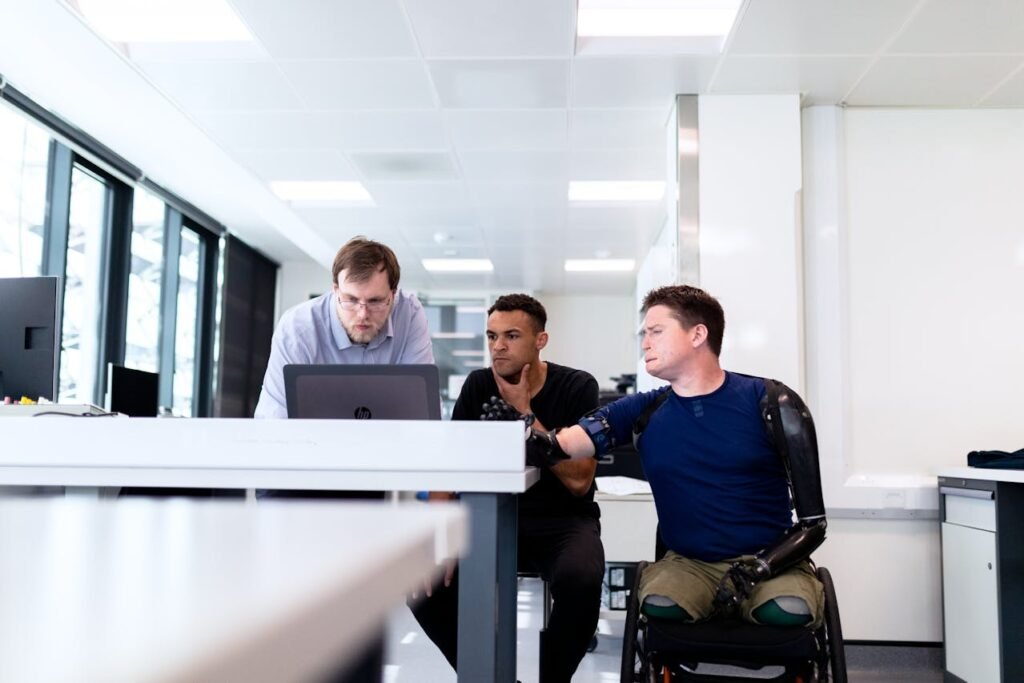
Sometimes, even with a good fit, users feel mild soreness or warmth after their first few trials. This often happens because your residual limb isn’t used to pressure from a socket yet.
Just like new shoes, it needs time to adapt. A short break or liner adjustment usually helps.
If soreness continues, we reassess the socket’s weight distribution. It may need a slight reshaping or softer padding in specific areas.
The goal is not just comfort — it’s long-term protection for your skin and tissue.
Skin Irritation and How to Handle It
Redness or itching under the socket can happen if the skin becomes sweaty or if friction builds up. This is especially common in warm, humid climates like most of India.
To manage this, we suggest cleaning your limb with mild soap, drying it completely, and applying a non-oily moisturizer before each session.
If irritation continues, we may change your liner material or adjust ventilation inside the socket.
Healthy skin ensures healthy prosthetic function.
When Muscles Fatigue Early
If you’re using a Mech or Bionic Hand for the first time, your muscles may tire easily. This is perfectly normal. Your body is relearning how to move and send signals in new ways.
Short, frequent practice sessions work better than long, tiring ones. Within a week or two, your strength improves, and movements feel effortless.
For users with myoelectric hands, we might slightly reduce signal sensitivity at first to prevent overexertion. As your muscles strengthen, we gradually increase it for full control.
When Signal Problems Persist
If the prosthesis still doesn’t respond properly after calibration, we look deeper.
We may check for skin moisture, sensor positioning, or even slight limb movement inside the socket. Sometimes, we find that muscle signals are overlapping — causing the prosthesis to misread which action you intend.
In such cases, we train your muscles separately, teaching you to isolate specific contractions. It takes practice, but once you master it, control becomes precise and natural.
Every user reaches that stage — some sooner, some later — but all eventually do.
Emotional Patience
It’s easy to feel discouraged if you don’t see instant perfection. But remember: every adjustment, every retry, every calibration is progress.
You’re not failing. You’re teaching your prosthesis to understand you.
The process is part of personalization. Even world-class athletes take time to fine-tune their equipment. Your prosthesis is no different — it’s your tool for freedom.
At RoboBionics, we stay with you until every fit, every signal, every motion feels exactly right.
Training Muscles for Better Signal Accuracy
Why Muscle Training Matters
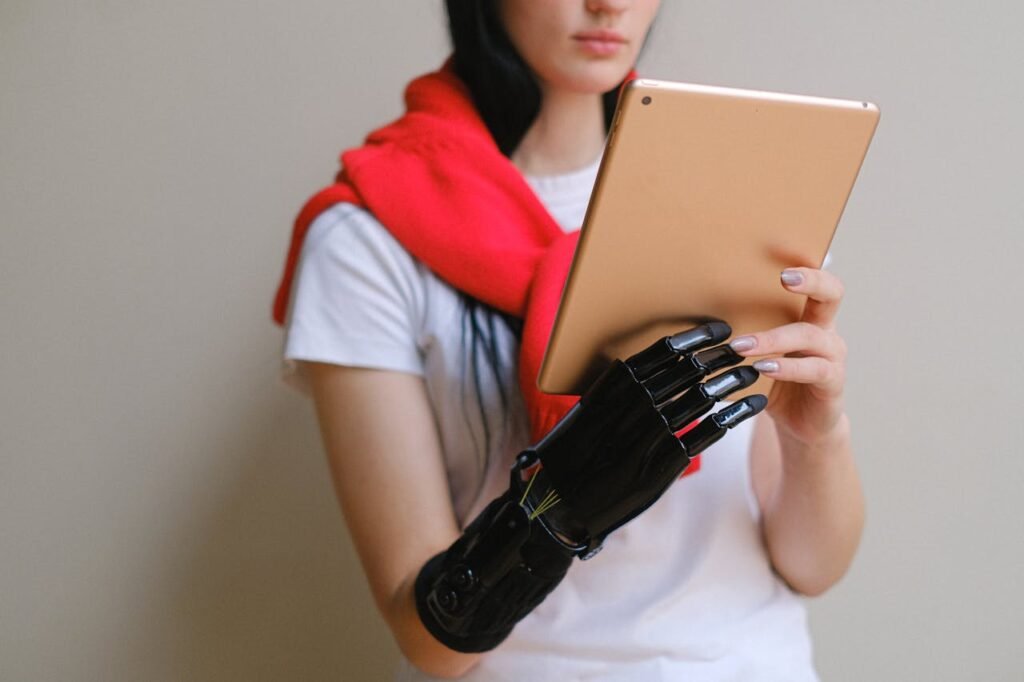
Your muscle signals are the language your prosthesis listens to. The stronger and clearer that language, the smoother your hand responds.
For bionic prostheses, this connection is everything. The good news? It improves quickly with simple daily exercises.
Even before getting your final prosthesis, training your residual limb helps your body prepare. Think of it as laying the groundwork for perfect communication.
Basic Warm-Up Exercises
Start by gently flexing the muscles in your residual limb a few times a day. Hold each contraction for a few seconds, then release.
You’ll feel the area getting more responsive over time. This helps the electrodes pick up stronger signals during trials.
We also recommend stretching your shoulder and upper arm to improve circulation and prevent stiffness.
A well-conditioned limb equals clearer signals and smoother motion.
Using the Grippy™ Gamified App
For users testing the Grippy™ Bionic Hand, we offer a gamified rehabilitation app. It turns muscle training into an engaging game.
You’ll perform tasks like gripping, rotating, and releasing — all in sync with on-screen challenges. The app measures your progress and adjusts difficulty automatically.
It’s not just practice; it’s motivation wrapped in fun. You’ll see improvements in both strength and control faster than you expect.
Daily Habits That Strengthen Signals
Your lifestyle also affects signal consistency. Staying hydrated, maintaining good nutrition, and resting your muscles properly all help maintain stable electrical activity.
Avoid using oily creams on your limb before wearing the prosthesis, as they can block sensor contact. Clean, healthy skin produces clearer signals.
With time, these small habits make a big difference.
When to Seek Expert Help
If, despite training, your signals still feel inconsistent, don’t hesitate to reach out. Sometimes the solution lies in reprogramming your prosthesis or adjusting electrode placement.
At RoboBionics, we use advanced diagnostic tools to analyze your signal pattern and fine-tune the device to your muscle rhythm.
It’s not about “trying harder.” It’s about tuning better.
Long-Term Adjustments After the Trial
The Post-Trial Fitting Phase
Once your trial ends and you’ve decided to move forward with your prosthesis, the next step is refinement. This stage ensures that everything you learned and felt during your trial becomes permanent comfort in your final fit.
Your prosthetist takes detailed measurements of your residual limb. They study how your muscles move, how your skin reacts to pressure, and how your body aligns naturally. This data helps craft a customized socket that supports you perfectly.
If your trial revealed any signal or comfort challenges, we address them here. We might adjust socket depth, sensor position, or liner material — all to make sure the final prosthesis feels effortless from the very first day.
Understanding Your Body’s Adaptation
Over the weeks following your trial, your body continues adapting. Your skin strengthens, your muscles learn, and your coordination improves. You’ll notice that the actions which once felt new now happen automatically.
It’s like learning to ride a bicycle. At first, every movement feels deliberate. But soon, it becomes second nature — your body and your prosthesis working as one.
During this stage, we schedule short follow-up visits to monitor progress. Even minor tweaks in fit or calibration can greatly improve daily comfort.
Recalibration Over Time
For bionic prostheses, recalibration is part of long-term care. As your muscle strength changes, we fine-tune sensor sensitivity to keep response smooth.
These adjustments are quick — usually just a few minutes during a regular check-up. Think of them like software updates for your body’s hardware.
Your prosthesis evolves with you. As you grow stronger and more skilled, it keeps up.
How to Know When an Adjustment Is Needed
Your body will give subtle signals when it’s time for a check-up. Maybe your socket feels tighter after activity, or your prosthesis takes a split second longer to respond.
These aren’t malfunctions — they’re natural signs of change. A small alignment tweak or recalibration restores performance immediately.
We always encourage users to reach out as soon as they sense anything different. It’s far easier to adjust early than to wait until discomfort grows.
Ongoing Maintenance
Routine maintenance ensures your prosthesis stays in excellent shape. For mechanical hands, we check cables, joints, and harness tension. For bionic hands, we inspect sensors, battery health, and electrical connections.
These appointments are simple and quick. Most users schedule them every few months. They’re an easy way to keep your prosthesis performing like new for years.
At RoboBionics, every customer receives lifelong service support — because we know that real care doesn’t end with delivery; it grows with your journey.
Building Emotional Confidence
The Emotional Impact of Troubleshooting
When you face early challenges during a trial, it’s easy to feel uncertain. Maybe you expected everything to work perfectly the first time. But the truth is, troubleshooting is not a setback — it’s a sign of progress.
Every person’s journey to mastering their prosthesis looks different. Some adapt in days, others in weeks. The pace doesn’t matter. What matters is that you keep going.
Each session brings you closer to freedom, to confidence, and to rediscovering all the things you thought you couldn’t do again.
Reconnecting with Your Body
A prosthesis is more than a device. It’s a bridge — between what your body remembers and what technology now allows you to do again.
As you learn to control your new limb, you’ll rediscover sensations you thought were gone — the feel of holding something, the rhythm of movement, the joy of doing things yourself.
That emotional connection is just as important as technical perfection. It’s what turns a prosthesis from a machine into a part of you.
Overcoming Self-Doubt
Many users experience moments of doubt during their journey. You might wonder if you’ll ever master it fully, or if your progress is “normal.”
We want you to know that these feelings are completely valid. Everyone struggles a little at first — even those who now use their prostheses effortlessly.
The key is consistency. With regular use and support, confidence builds quietly, one motion at a time.
Family and Support Systems
Your family plays a vital role in your success. Their encouragement, patience, and pride can lift your motivation on difficult days.
We often invite family members to attend training sessions, so they understand how your prosthesis works and how to assist you at home. This shared understanding strengthens your support system and makes your recovery smoother.
Over time, you’ll notice that your success doesn’t just impact you — it inspires everyone around you.
Celebrating Milestones
At RoboBionics, we encourage every user to celebrate their milestones, no matter how small.
The first time you grip an object confidently. The first full day without discomfort. The first compliment you receive for moving naturally.
These moments are proof of progress — reminders that you’re not just learning to use a prosthesis; you’re reclaiming your independence, one day at a time.
Follow-Up Care After Troubleshooting
Regular Check-Ins
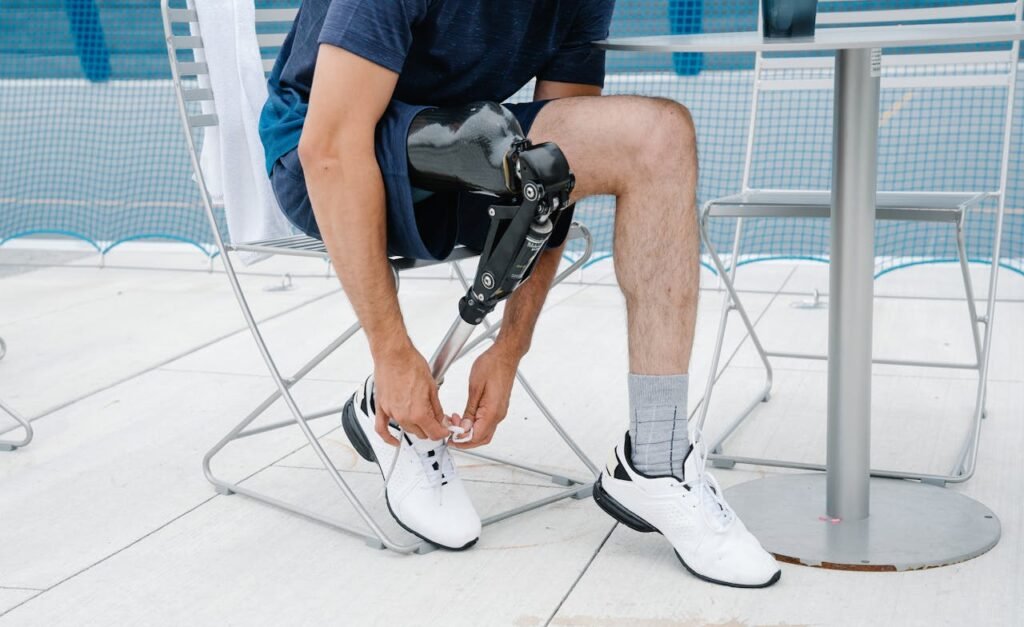
Once your final prosthesis is delivered, follow-up care ensures that all the fine-tuning done during troubleshooting remains perfect.
We schedule your first review within three weeks, then gradually space them out as you grow comfortable. These visits help track limb changes, check socket fit, and test sensor performance.
If needed, we make on-the-spot adjustments. You’ll leave every visit feeling more confident and in control.
Servicing and Upgrades
Technology evolves, and so should your prosthesis. We offer easy upgrades for both mechanical and bionic hands, allowing you to benefit from new features without replacing the entire device.
Whether it’s a lighter frame, a more responsive chip, or improved battery life, we make sure you always have access to the latest innovation.
Our aim is long-term satisfaction — a prosthesis that keeps improving alongside you.
Support Beyond the Clinic
Our care doesn’t stop at physical servicing. We provide virtual consultations, guidance through phone and video calls, and emotional support whenever you need it.
If something feels off, you can reach us immediately. Our experts will walk you through quick fixes or connect you to the nearest partner clinic.
Accessibility is at the heart of everything we do. Wherever you are in India, help is always close.
Financial Flexibility
Because affordability should never stand between you and progress, we offer flexible EMI plans for all our prosthetic solutions.
This allows you to focus entirely on your recovery without financial stress. Our goal is simple — to make advanced prosthetics a reality for everyone who needs them, not just those who can afford them.
A Partnership That Lasts
When you choose RoboBionics, you’re not just buying a prosthesis — you’re entering a partnership.
We stand by you through every adjustment, every calibration, every milestone. Your journey becomes part of our story, and your feedback shapes how we innovate further.
It’s a relationship built on trust, care, and shared progress.
Why RoboBionics Excels in Troubleshooting and Support
A Team That Understands
Our prosthetists, engineers, and therapists have years of experience working with different users — from first-time wearers to advanced bionic adopters.
We know the technical challenges, but more importantly, we understand the emotional journey. Every troubleshooting session is approached with empathy, patience, and respect.
Your comfort always comes before the clock.
Technology Designed for Real People
The Grippy™ Bionic Hand and our Mech Hand range are designed from the ground up for Indian users — lightweight, durable, and built to withstand everyday conditions.
With 60 of its 64 components made locally, the Grippy™ ensures easy maintenance and quick part replacements without long import delays.
And because of our Sense of Touch™ technology, signal accuracy and comfort go hand in hand — giving users a natural, intuitive experience during trials and beyond.
Affordable Excellence
Imported bionic hands often cost over ₹10 lakh, making them out of reach for most people. RoboBionics has changed that forever.
Our advanced prostheses are priced between ₹2.15 and ₹3 lakh — a fraction of global prices — while maintaining world-class quality.
We’ve proven that cutting-edge technology can be both affordable and compassionate.
Recognition and Trust
RoboBionics is recognized by the Government of India under the Startup India initiative and has been a finalist at the prestigious Extreme Tech Challenge.
But beyond awards, our real success is measured by stories — users who regain independence, confidence, and dignity.
We take pride in every handshake, every smile, and every life changed.
Moving Forward: Your Journey Starts Here
Book Your Trial
If you’re preparing for your first prosthetic trial or want to revisit your experience for better results, we’re here to help.
You can schedule your personalized demo today at www.robobionics.in/bookdemo.
Our team will guide you step by step — from fitting and signal calibration to comfort adjustments — ensuring you leave with clarity and confidence.
A Message from Our Team
Every challenge during your prosthetic journey is simply a step toward perfection. Troubleshooting is not a setback; it’s progress in disguise.
We promise that no matter what issue arises — whether it’s fit, signals, or comfort — we’ll work with you until it feels right.
Because at RoboBionics, we don’t just create prostheses. We create freedom, strength, and new beginnings.



